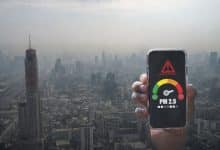Scientists at Mahidol University link PM2.5 exposure to onset of osteoporosis

A team of scientists from Mahidol University’s Faculty of Science, focusing on osteoporosis, recently discovered a potential link between fine particulate matter smaller than 2.5 microns (PM2.5) and the onset of osteoporosis. They observed that lab rats exposed to PM2.5 developed bone inflammation, leading to an increase in bone-degrading cells called osteoclasts.
The research, carried out by the Centre of Calcium and Bone Research (COCAB), suggests that PM2.5 particles when inhaled, infiltrate the lungs and other organs. The immune system cells then resist these particles, leading to inflammation that could, in turn, stimulate the development of osteoporosis.
The team noted an uptick in osteoclasts, a type of cell derived from specific white blood cells, instrumental in decreasing bone mass. This decrease in bone mass is a significant factor in the development of osteoporosis, a condition characterised by brittle and fragile bones.
The theory around PM2.5’s threat to human bones is being prepared for submission to international academic journals. The scientists hope this will spur further research into prevention strategies and treatments for osteoporosis potentially triggered by PM2.5, reported Bangkok Post.
In addition to this newfound connection with osteoporosis, PM2.5 is known to exacerbate other chronic diseases. It contains a myriad of particles and chemicals that could intensify conditions such as lung diseases and metabolic syndrome, according to sources. The team’s findings underscore the pressing need for more comprehensive studies into the far-reaching health implications of PM2.5 exposure.
In related news, Thailand faced a severe PM2.5 crisis as Bangkok and multiple provinces grappled with hazardous air quality, surpassing standard pollution levels. Collaborative efforts involving various agencies monitored the situation using satellite data.
Orange-level air quality affected 20 provinces, with Bangkok’s Phra Khanong district recording the highest PM2.5 levels. Public health advisories urged precautions, and air quality forecasts indicated fluctuations, emphasizing the persistent need for vigilance.
Latest Thailand News
Follow The Thaiger on Google News:


























